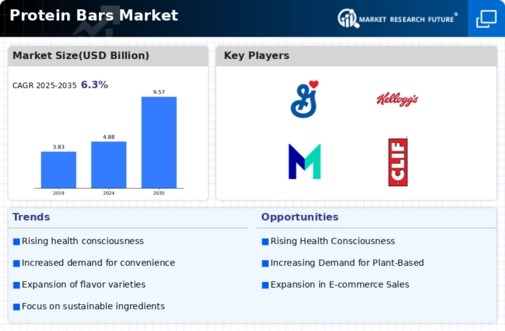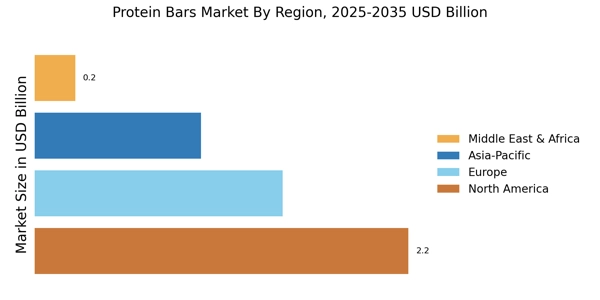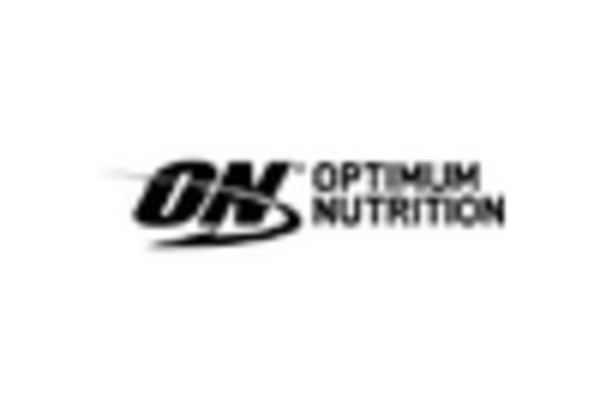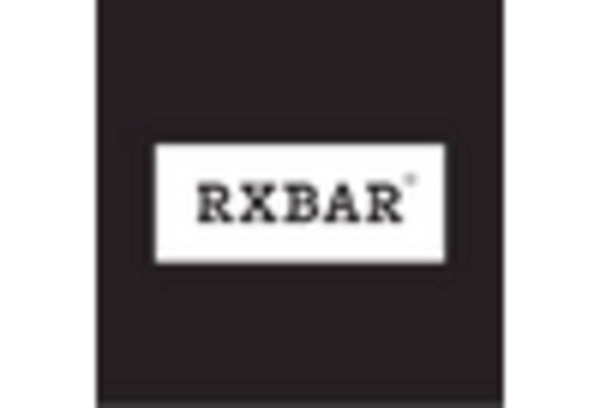The Protein Bars Market is currently characterized by a dynamic competitive landscape, driven by increasing consumer demand for convenient, nutritious snacks. Key players are actively engaging in innovation and strategic partnerships to enhance their market presence. Companies such as Quest Nutrition (US), Clif Bar & Company (US), and KIND Snacks (US) are at the forefront, each adopting distinct operational focuses. Quest Nutrition (US) emphasizes product innovation, particularly in developing high-protein, low-carb options that cater to health-conscious consumers. Clif Bar & Company (US) is leveraging its strong brand heritage in the outdoor and athletic segments, while KIND Snacks (US) is focusing on transparency and clean ingredients, appealing to a growing demographic concerned with health and sustainability. Collectively, these strategies contribute to a competitive environment that is increasingly centered around product differentiation and consumer engagement.
In terms of business tactics, companies are localizing manufacturing and optimizing supply chains to enhance efficiency and responsiveness to market demands. The Protein Bars Market appears moderately fragmented, with several key players holding substantial market shares. This fragmentation allows for niche brands to emerge, yet the influence of major players remains significant, as they set trends and standards that smaller companies often follow. The collective actions of these key players shape the market structure, fostering an environment where innovation and consumer preferences dictate competitive dynamics.
In August 2025, Quest Nutrition (US) launched a new line of plant-based protein bars, responding to the rising consumer interest in vegan and vegetarian diets. This strategic move not only diversifies their product portfolio but also positions them to capture a broader audience, particularly among younger consumers who prioritize plant-based nutrition. The introduction of these bars is likely to enhance Quest's competitive edge in a market increasingly leaning towards health-oriented options.
In September 2025, Clif Bar & Company (US) announced a partnership with a leading sustainability organization to improve its supply chain practices. This collaboration aims to enhance the sustainability of their ingredient sourcing, which is becoming a critical factor for consumers. By aligning with sustainability initiatives, Clif Bar & Company (US) not only strengthens its brand image but also addresses the growing consumer demand for environmentally responsible products, potentially increasing customer loyalty and market share.
In July 2025, KIND Snacks (US) unveiled a new marketing campaign focused on transparency and ingredient sourcing, highlighting their commitment to clean eating. This initiative is particularly relevant as consumers become more discerning about the nutritional content of their food. By emphasizing transparency, KIND Snacks (US) aims to differentiate itself in a crowded market, appealing to health-conscious consumers who seek authenticity in their food choices.
As of October 2025, the Protein Bars Market is witnessing trends such as digitalization, sustainability, and the integration of artificial intelligence in product development and marketing strategies. Strategic alliances are increasingly shaping the competitive landscape, allowing companies to pool resources and expertise to innovate more effectively. Looking ahead, competitive differentiation is likely to evolve, with a pronounced shift from price-based competition to a focus on innovation, technology, and supply chain reliability. Companies that can effectively leverage these trends will likely secure a more robust position in the market.


















Leave a Comment